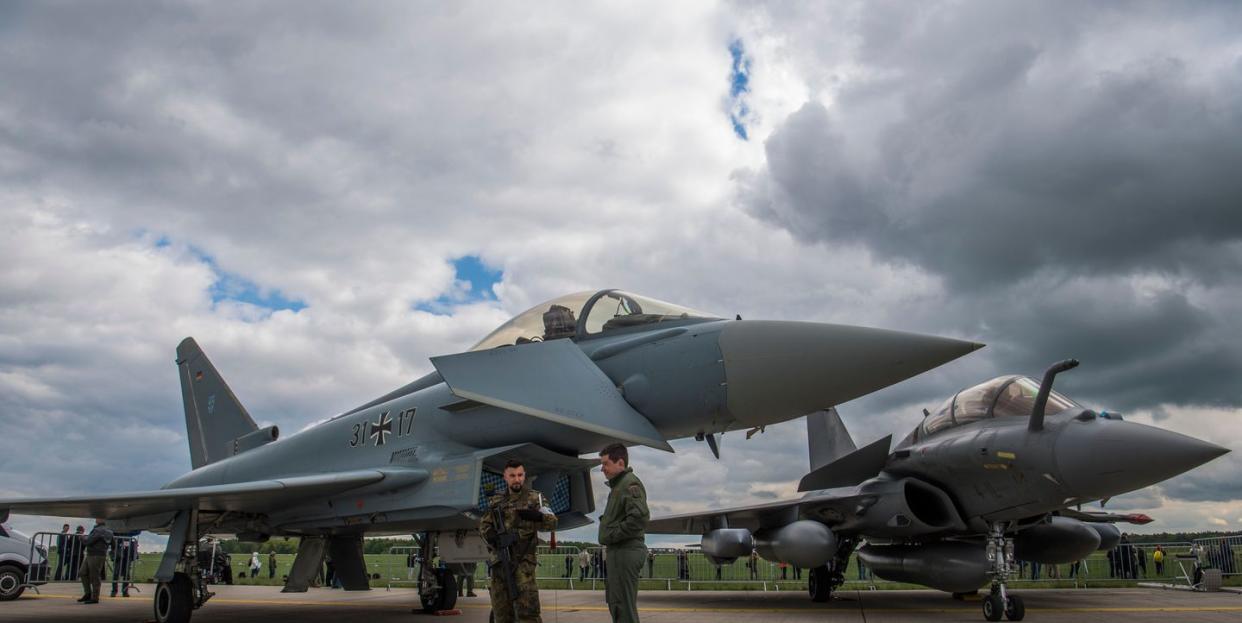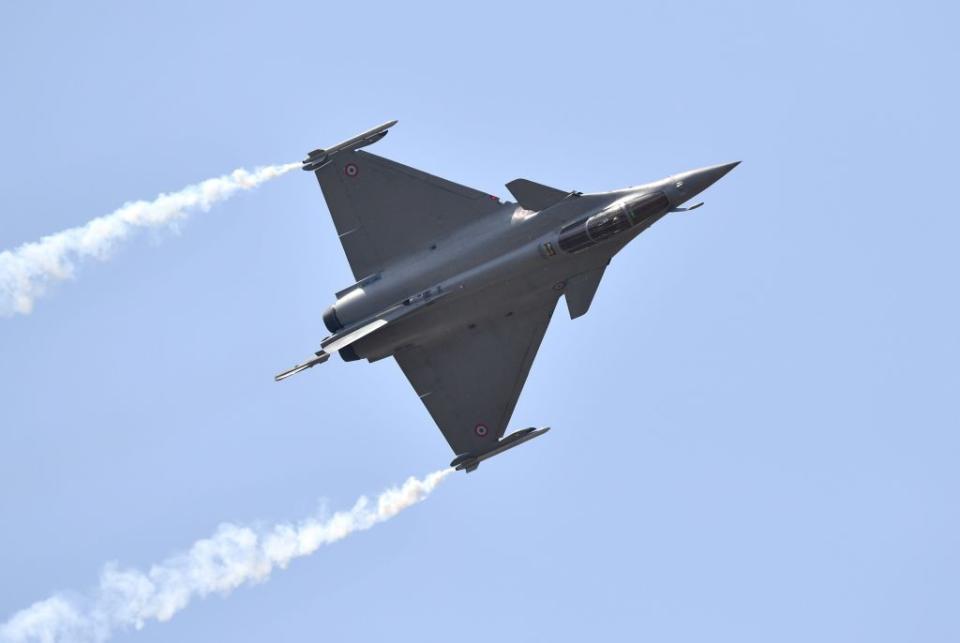France, Germany Teaming Up to Build Superfighter

France and Germany will work together to build a new fighter jet set to enter service in the mid-21st century. The unnamed fighter will enter service around 2040 and is set to have advanced capabilities including the ability to command swarms of drones. The collaboration between the two countries and long lead time is largely a function of the growing complexity of modern military equipment, which can take billions of dollars and a decade or more to develop.
The two countries signed an agreement to jointly develop a new fighter jet on Tuesday, June 19th. Under the agreement France will take the lead, while Germany will help finance the project and purchase a large number of aircraft. France’s aerospace industry is much more developed than Germany’s and has fielded several fighter jets on its own, including the current Rafale. (A similar agreement signed between the countries to co-develop a next generation main battle tank has Germany taking the lead.)

The joint fighter project is light on the details but we can make a few assumptions what it will look like. The Franco-German fighter will replace France’s Rafale and Germany’s Eurofighter Typhoon, both twin engine aircraft, so the new fighter will also need two engines. The aircraft will be stealthy and on the larger side, due to the need to store fuel and weapons internally to preserve the jet’s radar-evading shape. It will also likely have advanced sensors, including radar and infrared, and the communications and electronics to enable it to share-and jointly act on-sensor data with other platforms.
The Franco-German fighter will be a multi-role aircraft, capable of tackling both fighter and attack missions. The fighter will probably have three or four internal weapons bays: two smaller or narrower bays for air-to-air missiles and one or two larger bays for air-to-ground bombs and missiles. It will also have optional fastening points for hanging more fuel and ordnance weapons on the wings-while this would ruin the aircraft’s stealth profile it would enable the fighter to carry more fuel and weapons once threats in the air and on the ground were neutralized. Both countries need a fighter capable of carrying nuclear weapons, France to carry ASMP-A nuclear-tipped cruise missiles and Germany to carry American B-61-12 nuclear free-fall bombs.

The one capability the Reuters report specifically mentions is the ability to control a squadron of drones. A fighter commanding a squadron of drones could use them for all sorts of important tasks, including clearing a path through enemy air defenses, screening a wide area in the air or on the ground for threats, or ambushing enemy fighters.
In addition to those requirements, France needs the new fighter to be capable of operating from the aircraft carrier Charles de Gaulle. This would primarily require heavier, more robust landing gear to absorb the shock of suddenly landing on a pitching flight deck in the middle of the ocean. Building such landing gear into the jet isn’t such a big deal, but it could increase overall costs slightly for Germany, which has no carriers.

The new fighter won’t be ready for action for another 22 years, with a planned in service date of 2040. Today’s fighter jets can easily take a decade or more to develop: the F-22 took more than ten years, while the F-35 is going on 20 years. That may also be a little longer than it would otherwise take due to the astronomical cost of developing modern fighters: the total cost to develop the F-35 Joint Strike Fighter is (so far) $64.7 billion dollars. France’s entire defense budget for 2018 is $39.7 billion, while Germany’s is $43.5 billion. While the Franco-German fighter won’t be as complex as the F-35, both countries will need to stretch out development to make just developing the plane affordable, let alone buying it.
The bilateral development effort will be headed by French aerospace giant Dassault Aviation on the French side and Airbus on the German side. The two countries will start development later this year, kicking it off with a study to determine exactly what both countries require. One concern here is that, with a 22 year development time, what the two countries think they need in 2018 and what they will need in 2040 may differ in some very expensive ways. A fighter designed in 1996 and meant to enter service in 2018 would have totally missed the armed drone revolution and could be fielded with dated technology.
You Might Also Like

